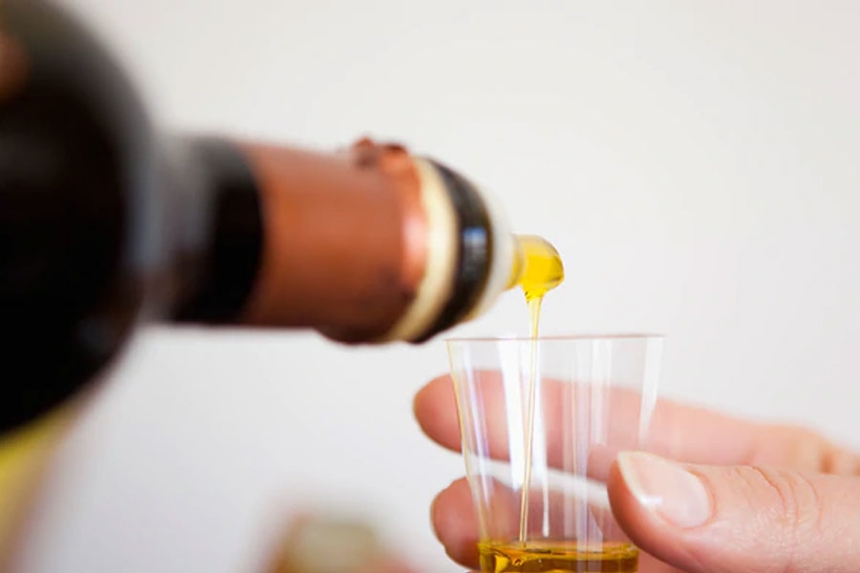
What's all the fuss about good olive oil?
Fresh, high-quality extra virgin olive oil is one of the world's healthiest foods. Olive oils crafted with care are packed with antioxidants and phenolic compounds that are proven to help reduce and prevent diseases.
The best olive oils are blow-your-mind delicious and they elevate the tastes of our foods in ways we never imagined. Hundreds of olive varieties offer countless pairing possibilities that chefs are only beginning to discover.
What makes a good olive oil?
Fruitiness
Every good olive oil needs to have the aroma of fresh fruit. Olives are fruits, after all. The oil should smell fresh and fruity.
Bitterness
Olives are mighty bitter straight off the tree. So any fresh, high-quality olive oil must be bitter, which we perceive on the tongue.
Pungency
Pungency is that cough-inducing sting on the throat that's caused by the healthy phenolic compounds in fresh, high-quality olive oil.
Phenols Make Olive Oil Medicine
Perhaps the most important characteristic of olive oil is the health-producing high-phenolic compounds that some possess. Two of the very best phenols are oleocanthal, a natural anti-inflammatory agent, and oleacein, a potent antioxidant.
Some of the benefits of phenols (also known as polyphenols) include:
Reduction of harmful cholesterol.
Treatment of inflammatory conditions, including asthma.
Lowering of blood pressure.
Protection against many types of cancer.
High-phenolic olive oils are much more than food—they are truly medicinal. Unfortunately, polyphenols degrade over time, so ideally you’ll choose an olive oil that is less than one year old and that had very high phenol levels at the time of its bottling.
How to Identify High-Phenol Olive Oil
The best way to tell if your favorite olive oil has a high phenol level is by simply tasting it.
Phenols give the oil a peppery after-taste. If your olive oil has absolutely zero pleasant burn to it, it probably has very low phenol levels. The best olive oils will actually make you cough a little—that’s how peppery their flavor is!
Some olive oil manufacturers publish their phenol levels (in parts per million, or ppm) on their bottles, and these are often the healthiest olive oils.
Although taste is subjective
Nutrient Composition of Extra Virgin Olive Oil
Extra virgin olive oil is fairly nutritious.
It contains modest amounts of Vitamins E and K and plenty of beneficial fatty acids.
This is the nutrient content of 100 grams of olive oil
Saturated fat: 13.8%.
Monounsaturated fat: 73% (most of it the 18 carbon long oleic acid).
Omega-6: 9.7%.
Omega-3: 0.76%.
Vitamin E: 72% of the RDA.
Vitamin K: 75% of the RDA.
But where extra virgin olive oil really shines is in its content of antioxidants.
These substances are biologically active and some of them can help fight serious diseases
Some of the main antioxidants are the anti-inflammatory oleocanthal, as well as oleuropein, a substance that protects LDL cholesterol from oxidation
Some people have criticized olive oil for having a high Omega-6 to Omega-3 ratio (over 10:1), but keep in mind that the total amount of polyunsaturated fats is still relatively low, so this shouldn't be a cause for concern.
Can You Cook With It?
During cooking, fatty acids can oxidize. That is, they react with oxygen and become damaged.
It is mostly the double bonds in the fatty acid molecules that are responsible for this.
For this reason, saturated fats (no double bonds) are resistant to high heat, while polyunsaturated fats (many double bonds) are sensitive and become damaged.
It turns out that olive oil, which contains mostly monounsaturated fatty acids (only one double bond), is actually fairly resistant to high heat.
In one study, researchers heated extra virgin olive oil to 180 degrees Celsius (356 degrees Fahrenheit) for 36 hours. The oil was highly resistant to damage.
Another study used olive oil for deep frying, and it took 24-27 hours for it to reach damage levels that were deemed harmful.
Overall, olive oil seems to be very safe... even for cooking at fairly high heat.
